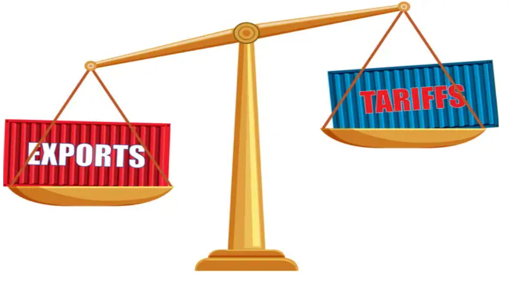INP-WealthPk
Qudsia Bano
Pakistan's fragile export-led growth model faces a new wave of turbulence following the imposition of a 29% tariff by the United States on a wide range of Pakistani goods.

The move, seen as part of Washington's broader trade recalibration, has raised alarm bells among economists, exporters, and investors, as it threatens to derail an already risky economic recovery. Pakistan’s textile and apparel sector, which contributes 60% of the country’s total exports and employs approximately 15 million workers, is expected to bear the brunt of the tariff hike.
In FY24, Pakistan’s total textile exports stood at $16.5 billion, with the US accounting for approximately $4.5 billion of that volume. With a 29% tariff slapped onto this segment, analysts project a 25-30% reduction in orders from US buyers in the next two quarters, pushing Pakistan's annual export earnings down by up to $1.2 billion.
Fahad Javaid, trade economist at All Pakistan Textile Mills Association (APTMA), said: “We are already facing cost pressures due to high energy tariffs and supply chain disruptions. Now, with this US tariff, many exporters might find it unviable to continue shipping to the US.” Beyond the textile mills, the tariff shock has unsettled Pakistan's macroeconomic stability, sending ripples through the foreign direct investment (FDI) landscape.
In the first half of FY25, Pakistan recorded FDI inflows of just $750 million, a 28% decline year-on-year. The country’s reliance on exports as a key driver of economic growth, especially to service its $130 billion external debt, means any volatility in trade performance directly impacts investor confidence. Dr Amjad Rashid, an economic analyst and former member of the Planning Commission, said, “A sustained drop in exports could weaken the current account position, increase borrowing requirements, and delay IMF disbursements.
Investors are seeing these risks pile up fast.” Pakistan’s GDP growth forecast for FY25 has already been revised down to 2.3% by the Asian Development Bank (ADB), citing weak exports and falling remittances. Experts warn that the US tariff could knock off another 0.3 to 0.5 percentage points from growth, especially if other trading partners follow suit or if Pakistan fails to diversify quickly. Moreover, the government has aimed to grow exports to $38 billion by FY26 under its Strategic Trade Policy Framework.
With tariffs now choking major export destinations, this target appears increasingly unrealistic. Industry leaders and economists are urging the government to immediately pivot towards market diversification, regional trade agreements, and incentives for value-added exports. Dr Hina Ali, Associate Professor of Economics at Quaid-i-Azam University, stated, “We need to explore new destinations like Central Asia and Africa, invest in digital trade, and offer targeted subsidies for exporters affected by this tariff.”
The Pakistan Business Council (PBC) has also called for a renegotiation of trade terms with the US, potentially through bilateral diplomatic channels or via the Generalised System of Preferences (GSP). As the US tariff takes hold, Pakistan’s export-led growth model—already weakened by domestic inefficiencies and global shocks—faces one of its sternest tests yet. The road ahead demands swift structural reforms, global outreach, and domestic policy recalibration to shield the economy from a deeper crisis.
Credit: INP-WealthPk





